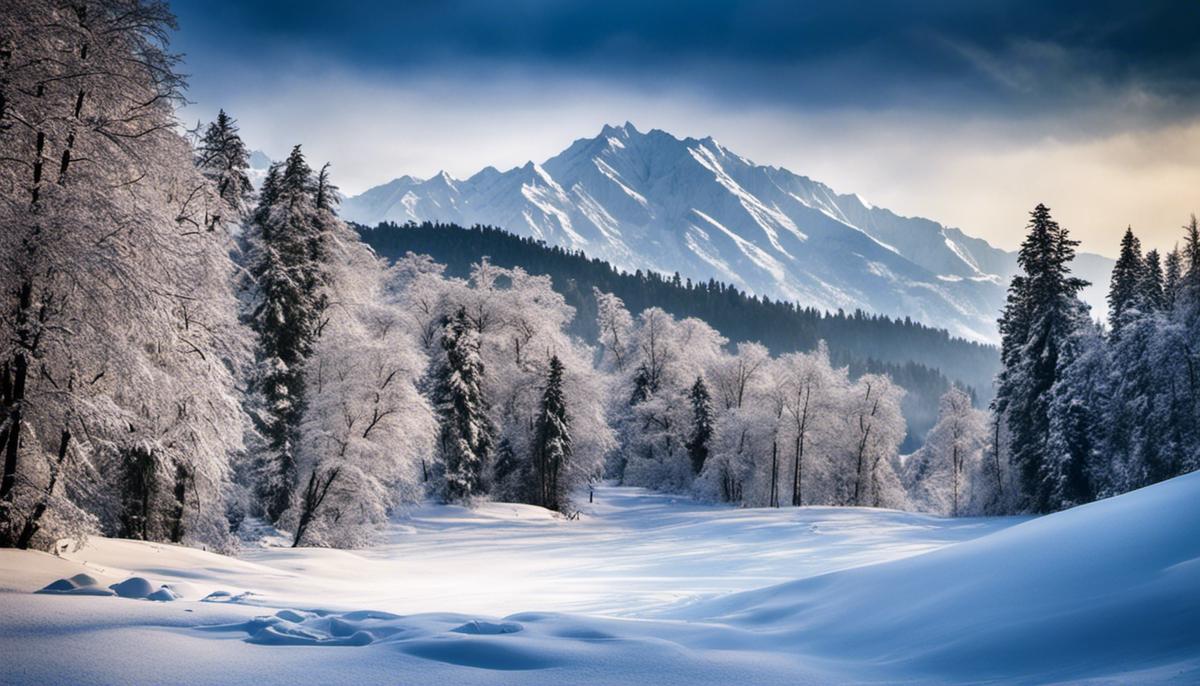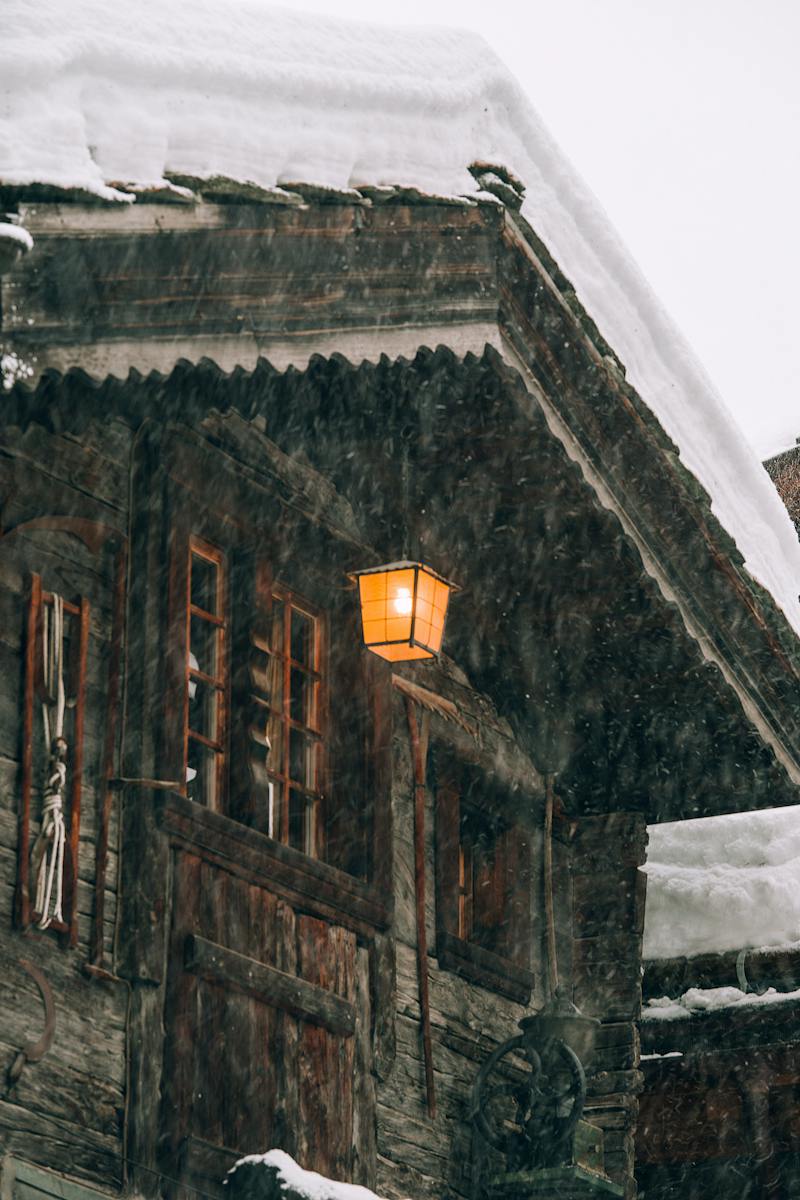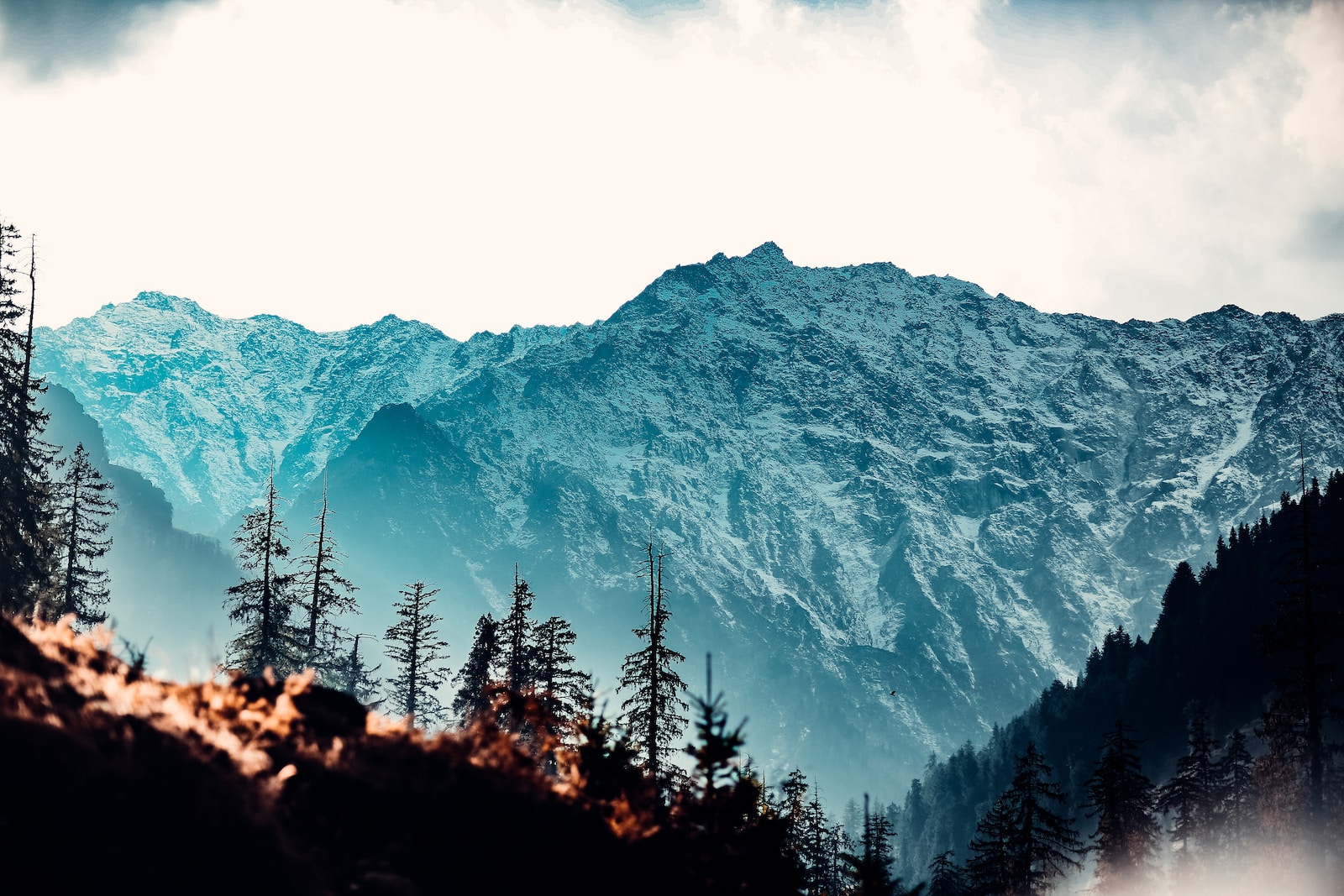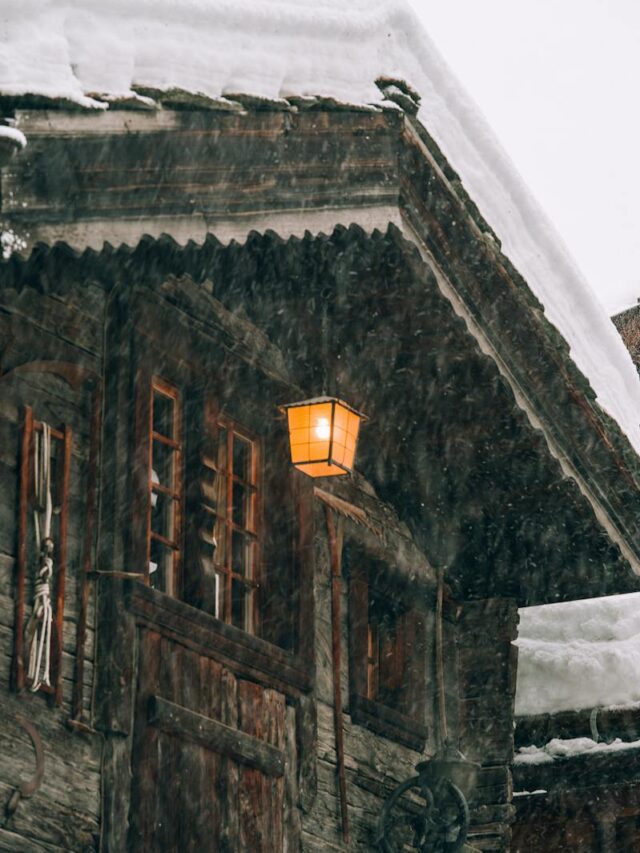|
Getting your Trinity Audio player ready... |
In a world filled with countless landscapes and diverse climate patterns, there’s something truly mesmerizing about the snow-covered valleys of Kashmir. Stretching across northern India, this picturesque region is not only an iconic traveler’s destination, but also a fascinating subject for those interested in climate studies and environmental sciences. Kashmir changes dramatically with the seasons, and perhaps nothing is more captivating than its transformation under the winter snowfall. This captivating phenomenon deftly intertwines natural processes and human lives, shaping the region’s unique culture and biodiversity, while attracting globally renowned climatologists and intrigued tourists from around the world.
Understanding Kashmir’s Climate
Kashmir’s Varied Weather Patterns
Kashmir, also known as the “Paradise on Earth,” is located in the northwestern region of the Indian subcontinent. The region experiences a diverse range of weather conditions, characterized by scorching summers and frigid winters. These weather patterns fluctuate wildly, all contributing to the timing and intensity of the region’s snowfall.
Annual Temperature Swings
Kashmir witnesses drastic variations in temperature throughout the year. Summers, particularly those from May to July, can see temperatures climbing to over 30 degrees Celsius (86 degrees Fahrenheit). This period is usually bright, warm, and welcoming, with stunning vistas of fertile valleys and clear, meandering rivers.
Contrastingly, the winter months of December to February herald extreme chill, with temperature nosediving as low as -30 degrees Celsius (-22 degrees Fahrenheit). The region is wrapped in a cloak of pristine white snow, transforming vistas into winter wonderlands, while also bringing with it challenges for the local populace.
Snowfall in Kashmir
The onset of winter is synonymous with the arrival of snowfall in Kashmir. The first snowfall usually occurs in late October or early November, marking the transition from autumn to the winter season. The intensity and duration of snowfall are heavily influenced by various factors such as atmospheric moisture, wind patterns, and temperature.
Regular intervals of heavy snowfall are a common feature of Kashmir’s winter. These periods of snowfall are often localized and vary in intensity, ranging from brief flurries to long-lasting blizzards. March and April are often credited as having the heaviest snowfall due to the late winter storms.
Impact of Temperature on Snowfall
The pivotal factor that determines the frequency and intensity of snowfall in Kashmir is the temperature. When temperatures hover around the freezing point, snowfall is more likely. As temperatures dip further, snowfall intensifies, layering the region in copious amounts of snow.
Kashmir Snowfall and Its Connection to Climate Change
Over recent years, climate change has begun to alter the predictable patterns of snowfall in Kashmir. Winter temperatures have been increasing which has led to decreased snowfall. This reduction not only diminishes the natural aesthetic of the region but has major implications on the ecosystem and the local economy, particularly the winter tourism sector. It’s increasingly important that ongoing studies and surveillance are undertaken to fully identify the lasting effects climate change may have on Kashmir’s snowfall patterns.

The Phenomenon of Kashmir Snowfall
Seasonity and Statistics of Kashmir Snowfall
Snowfall in Kashmir generally commences in late November, at the onset of the winter season, and tapers off by mid-March. The weather during this season is defined by extremely low temperatures and substantial snowfall. However, the intensity and duration of these snowfall periods can greatly vary, as periods of heavy snowfall are often broken up with increment weather.
On average, the Kashmir region sees between 60 to 80 inches of snow during the winter season. The most snowfall recorded for a single day hit 44.5 inches, a record set back in January of 1893.
Atmospheric Conditions and Snowfall in Kashmir
Formation of snowfall involves specific weather and atmospheric conditions. The atmospheric pressure plays a significant role in triggering snowfall.
Generally, as the air pressure decreases, the temperature also decreases. This can lead to the formation of snow clouds, especially if it is coupled with an influx of moisture. In Kashmir, a low pressure weather system typically originates from the Mediterranean region and moves towards the Indian subcontinent. When these low pressure systems encounter the Himalayan mountain range, they rise and cool, thereby leading to snowfall in the Kashmir region.
The Science Behind Snowflakes
The process of snowflake formation begins when water vapor in the air condenses directly into ice, skipping the liquid water stage, a process known as deposition. Atmospheric humidity and temperatures below freezing are prerequisites for this process. Each snowflake starts forming around a particle of dust in the air.
The unique six-sided shape of snowflakes is a result of the molecular structure of water. Water molecules in an ice crystal form a hexagonal lattice, and snowflakes mirror this structure as they grow. The intricate and diverse designs of snowflakes are due to varying conditions of temperature and humidity as the snowflake falls to the ground.
Kashmir’s Distinct Weather Patterns
Nestled in the northernmost part of India, Kashmir is uniquely situated against the backdrop of the Himalayas. These towering giants are a key force in shaping the region’s climatic conditions.
The Himalayan barrier detains the frigid Central Asian winds, thus providing a comparatively warmer environment to the Indian subcontinent considering its latitude. But their existence simultaneously subjects the Kashmir valley to brisk winters accompanied by considerable snowfall, resulting from weather systems from the Mediterranean climbing and swiftly cooling upon meeting the Himalayan range.
This intense snowfall greatly influences both the lifestyle and environment of Kashmir. Serving not just as a source of year-round river flow originating from the terrain, it benefits the soil fertility as well. On the other hand, routine life activities often come to a halt due to road blockages and treacherous avalanches spurred by the heavy snowfall.
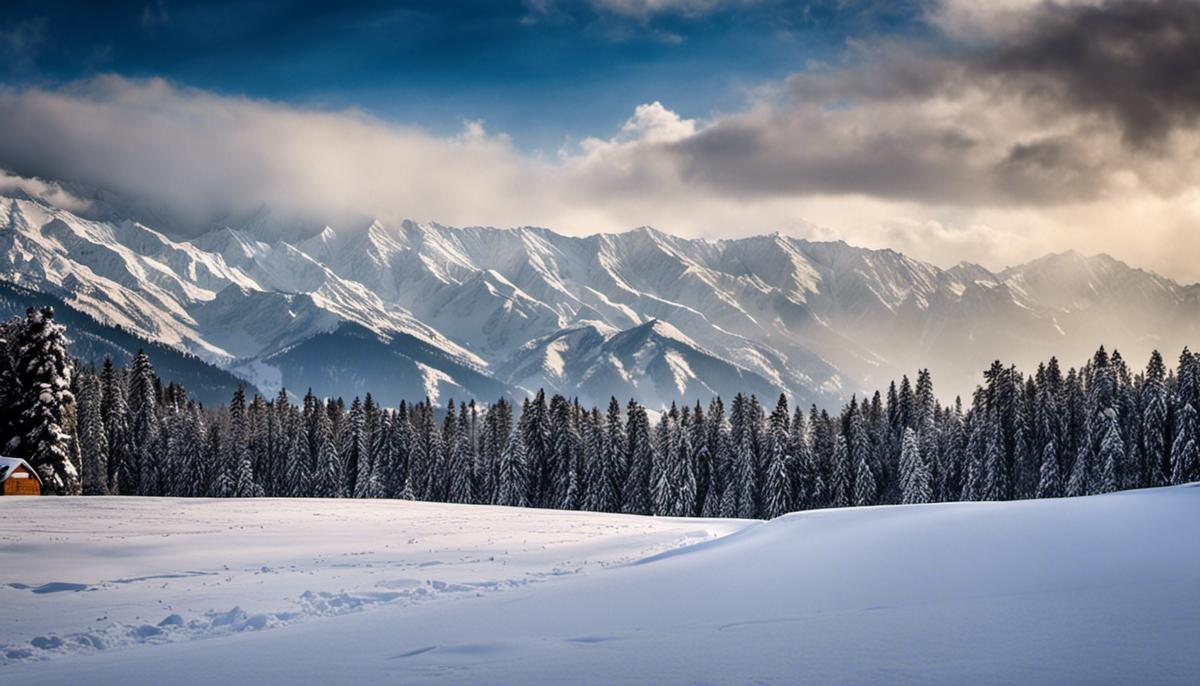
Effects on local Flora and Fauna
Snowfall’s Influence on Kashmir’s Biodiversity
The role of snowfall in Kashmir extends beyond climate and lifestyle, significantly influencing the region’s rich biodiversity. From microscopic creatures to towering mammals, and supportive plant life, each species has been forced to adapt to the extreme winters that define this environment.
Animals Adaptations
The animals in Kashmir have developed unique traits to withstand the intense winter conditions. For instance, the Snow Leopard, one of the most iconic species of the region, has a thick coat of fur that provides insulation against the freezing temperatures. Its large nasal cavities warm the cold air before it reaches the lungs. Moreover, the Snow Leopard’s wide, sturdy paws function like natural snowshoes, allowing it to effectively traverse the deep snow.
Then there’s the elusive Kashmir Stag or Hangul, a species of red deer unique to Kashmir, which transitions to a thicker fur during winters. It migrates to lower elevations during the heaviest period of snowfall, often traveling in large groups for protection against predators.
The Himalayan Black Bear hibernates during the winter months, falling into a deep sleep that allows it to survive without food or water. This adaptation allows it to conserve energy during the season when food is scarce.
Plant Adaptations
Kashmir’s plant life has also devised impressive strategies to survive the winters. Many tree species, such as the Chinar and Deodar, shed their leaves to reduce water loss through transpiration. This state of hibernation allows them to conserve resources. Some grasslands and ferns retain their greenery by developing antifreeze proteins that prevent cell damage during freezing.
The rhizomes of the Iris kashmiriana, a flower species endemic to the region, remain dormant under the snow until conditions are favorable for growth. The plant’s deep purple bloom is a heartening sign of the coming Spring.
Kashmir’s Unique Biodiversity and its Relation with Snowfall
In the harsh winter conditions of Kashmir, certain insects and microorganisms have adapted to embrace the snowfall rather than endure it. Waiting out the coldest months underneath the snow, they conserve their energy to reproduce when the snow melts. Such cycle is significant in fertilizing Kashmir’s soil, supporting a rich and vibrant ecosystem.
The extreme climate brought by snowfall has resulted in a high level of endemism in Kashmir. There are several species that are found nowhere else, making this region unique. The survival of these species and their habitat is crucial in maintaining Kashmir’s delicate ecological balance. The adaptability and resilience these species show against the harsh winters are truly an embodiment of nature’s tenacity.
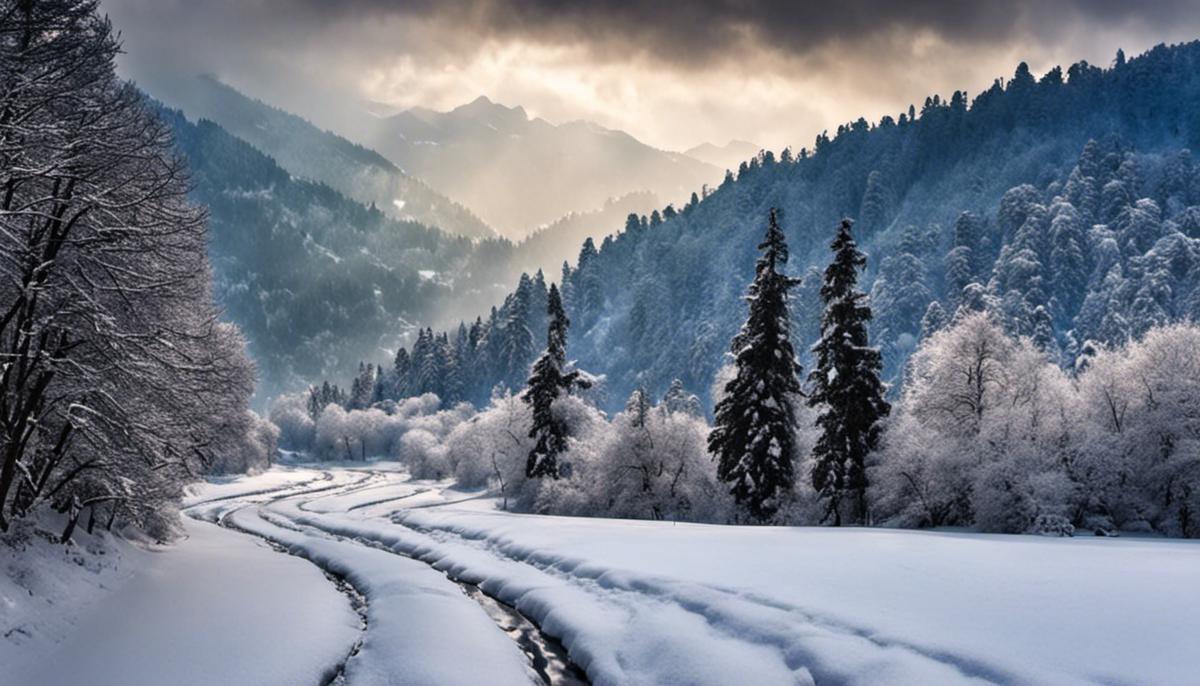
Impact on Human Life: Culture and Survival
Cultural Significance of Snowfall in Kashmir
Nestled amid the Himalayan peaks, Kashmir Valley is famous for its winter snowfall that not only paints the valley white but also plays a significant role in shaping the region’s culture and customs. The local communities embrace the snowfall and engage in an array of traditional activities unique to the region. As the winter season commences, communal bonfires and cultural storytelling events become common sights. Traditional delicacies, like the warm Harissa, become the staple food to fend off the chill. One cherished and fun-filled tradition in this season is ‘Sheen Jung,’ wherein communities indulge in friendly snow fight competitions, contributing to a spirit of camaraderie amid the harsh winter.
Impact on Transportation and Daily Activities
Heavy snowfall in Kashmir significantly affects transportation and daily activities. Thick layers of snow tend to block major passes and roadways, leading to traffic snarls and road closures. The Srinagar-Jammu National Highway, an essential lifeline that connects Kashmir to the rest of India, often becomes inaccessible during heavy snowfall. Potential avalanches and landslides also contribute to the transportation disruption. Commuting becomes a strenuous activity and locals are often limited to the confines of their homes. Essential services like waste disposal, emergency health services, and electricity supply can also be severely interrupted during peak snowfall periods. Despite these challenges, locals have demonstrated resilience, often clearing paths and aiding each other in daily activities.
Hardships Endured by Locals
The harsh winters and heavy snowfall in Kashmir can cause significant hardships to the local residents. Winters see prolonged power outages that last up to 15-20 hours a day, causing extreme discomfort and disruption in everyday life. The region’s poor rural and suburban sections are often hit the hardest, as home heating facilities are limited. Frigid temperatures can cause freezing of water pipes, leading to water scarcity issues. The health sector is severely impacted too, with medical services becoming hard to reach, and an increase in cases of frostbite, hypothermia, and other winter-related ailments.
Snowfall’s Essential Role in Kashmir’s Economy
Despite the potential challenges it may bring, snowfall is a crucial aspect of Kashmir’s local economy, particularly relevant to the tourism industry. Each winter, the region transforms into a captivating winter wonderland, attracting thrill-seekers from all corners of the globe for winter sports like skiing, snowboarding, and ice skating. Popular ski destination Gulmarg sees a significant influx of tourists during the peak snowfall season while snow-kissed landscapes of Pahalgam and Sonamarg mesmerize tourists and photographers alike, providing a much-needed boost to the economy. Other vital facets such as hoteling, houseboats, and local handicrafts also experience increased demand during the snowfall season. All of these components highlight snowfall’s significance in the economic stability of Kashmir’s local communities.

Kashmir Snowfall: A Global Perspective
Kashmir’s Winter Wonderland: A Global Tourist Attraction
Renowned for its breathtaking landscapes and unique culture, Kashmir metamorphoses into a shimmering white paradise each winter, luring tourists from different parts of the world seeking an unforgettable snowy experience. Nestled amid the majestic Himalayan ranges, the snow-capped hills and frozen lakes of the region create an unrivaled allure. An array of exciting activities like skiing, snowboarding, and snow-shoeing help add a dash of adventure to any holiday, amplifying Kashmir’s appeal among international vacation-seekers.
The tranquil towns of Gulmarg and Pahalgam, celebrated for their impressive snowfall, are hotspots for adrenaline-pumping winter sports. Another distinguishing feature is Gulmarg’s highest gondola ride in the world, which allows visitors to marvel at the pristine, snow-draped landscapes from an elevated perspective. In summary, Kashmir’s snowfall plays a transformative role in its tourism industry, significantly bolstering the region’s economy.
Snowfall Trends in Kashmir: Insights of the Science Community
Scientists in the field of climate studies and meteorology keep a close watch on the snowfall trends in Kashmir, which are believed to offer critical insights into the broader patterns of global climate change. The complex interplay of geographical location, altitude, and atmospheric conditions make the region an exciting case study for understanding shifts in weather patterns.
In recent years, experts have brought attention to the changing snowfall patterns in Kashmir, indicating an increase in warming trends. The irregularities in snowfall and extended dry periods foreshadow severe water scarcity and negative impacts on agriculture and horticulture – the mainstays of Kashmir’s economy.
Climate Change and Kashmir’s Snowfall: Warnings and Implications
The environmental changes resulting from human-induced climate change underscore a significant threat to Kashmir’s snowfall, causing an unmistakable alteration in frequency and density. Climate model projections suggest a decrease in snowfall for the region in the future, with an associated increase in rainfall due to rising temperatures.
This potential alteration can have serious environmental repercussions. A decline in snowfall can lead to a decrease in the region’s glacier extent, which feeds its rivers and streams. This disruption could likely impact the water availability, threatening not only the human communities but also the region’s rich biodiversity.
Furthermore, alterations in snowfall patterns can adversely affect winter tourism in Kashmir, an essential aspect of its economy. The susceptibility of the snowfall-dependent activities to climate change, therefore, demands immediate and sustainable countermeasures to mitigate potential impacts.
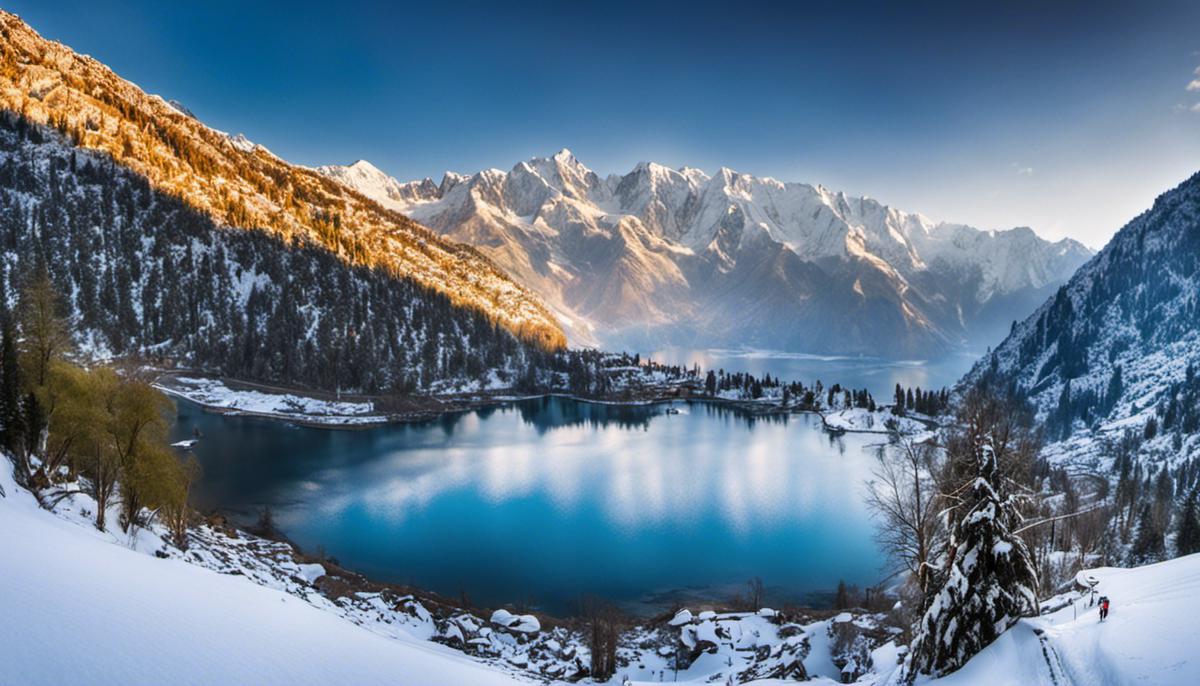
Through the lens of Kashmir’s snowfall, we can see an interconnected world governed by nature’s rhythm. As we take a closer look at this captivating spectacle, we also uncover the remarkable resilience of its local population and biodiversity, the economic implications woven into the fabric of snowfall, and its profound global significance. Significantly, Kashmir’s annual winter phenomenon also serves as a poignant reminder of our responsibility towards the environment, as understanding and responding to changes in its patterns can potentially provide insights into global climate shifts. So, as the Kashmiri snowflakes descend gracefully from the heavens each year, they carry with them not just sublime natural beauty, but also the echoes of adaptability, survival, fascination, and responsibility from the roof of the world to each corner of the globe.
Experience the power of Writio’s AI content writer! This article was meticulously crafted by our very own Writio.


